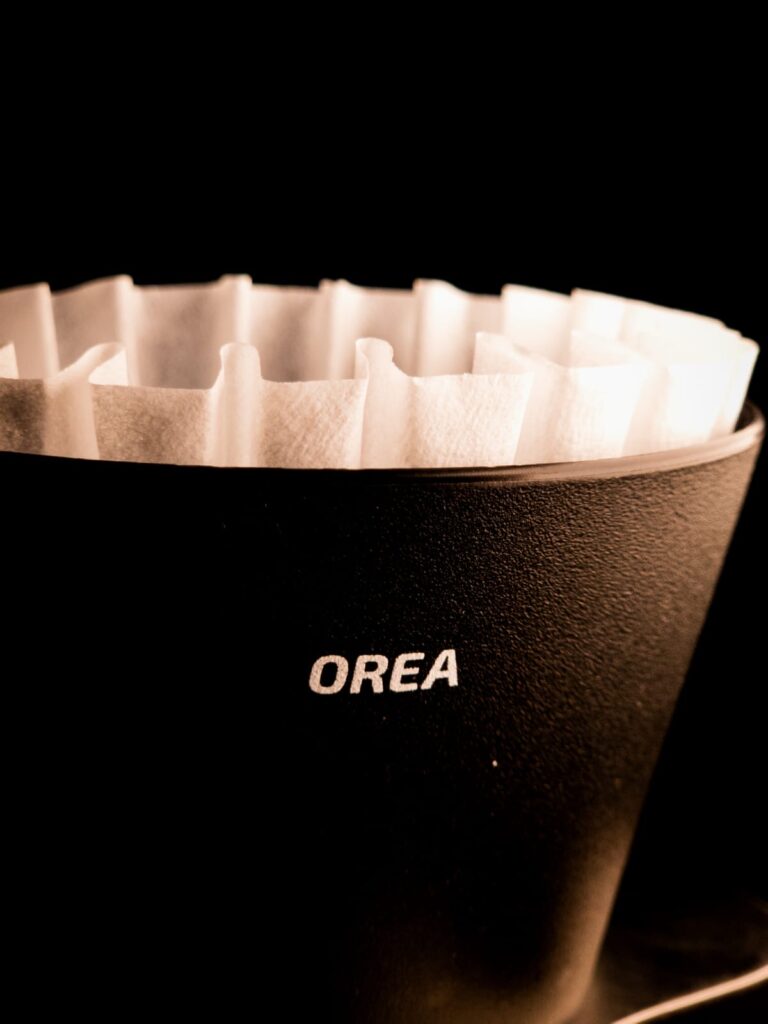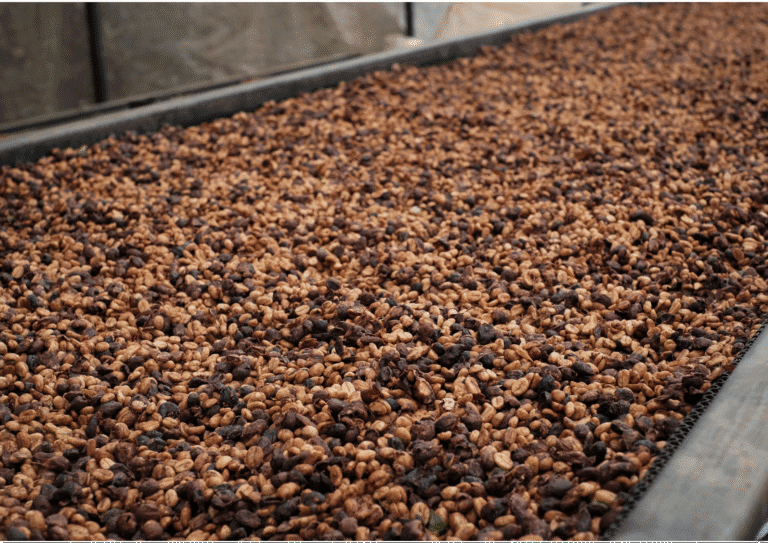Coffee is one of the most consumed beverages on the planet, yet not all of it is created equal. The distinction between specialty vs commodity coffee goes far beyond taste. It goes deeper into: quality, pricing structures, sustainability and the livelihoods of the amazing people who grow it. As consumers become more discerning, understanding this divide between specialty and commodity is essential for making informed choices that support ethical sourcing and better coffee experiences. So, let’s get started.

What Is Commodity Coffee?
Commodity coffee is traded on the global market like oil or wheat, with its price determined by the C-price—a benchmark set by supply and demand, not quality. As of late October 2025, the commodity coffee price sits at $3.93 per lb. This price fluctuates based on weather conditions, geopolitical events, and speculation, often leaving farmers vulnerable to market volatility.
Commodity coffee is typically mass-produced, with little regard for origin, flavour profile, or farming practices. Beans are often blended from various sources, and quality control is minimal. This type of coffee is what you’ll find in instant coffee jars, supermarket blends, and many large chain, or mass supply coffee roasting offerings.
What Is Specialty Coffee?
Specialty coffee, on the other hand, is defined by quality. According to the Specialty Coffee Association (SCA), a coffee must score 80 points or above on a 100-point scale to be considered specialty grade. These scores are based on attributes like aroma, acidity, body, and flavor. Specialty coffee is often single-origin, traceable to a specific farm or cooperative, and grown under conditions that enhance its unique characteristics.
The journey of specialty coffee is meticulous—from selective hand-picking of ripe cherries to careful processing and roasting. Farmers, roasters, and baristas work together to preserve and highlight the bean’s natural qualities. This attention to detail results in a cup that’s not just coffee, but an experience.
Quality: The Defining Factor
The most obvious difference between specialty and commodity coffee is quality. Commodity coffee prioritizes quantity over quality, often including defective beans, inconsistent screen sizes, and mixed varieties. In contrast, specialty coffee undergoes rigorous quality control at every stage—from farm to cup.
For example, specialty farms train pickers to select only red, ripe cherries, which are then sorted again to remove any defects. This labor-intensive process ensures a clean, flavorful cup, free from bitterness or sourness caused by under- or overripe cherries.
Moreover, specialty coffee is often grown at higher altitudes, in microclimates that enhance flavour complexity. Arabica beans, which dominate the specialty market, are more delicate and require specific growing conditions, unlike the hardier Robusta beans common in commodity blends.
Pricing: A Tale of Two Markets
Pricing is where the divide becomes stark. Commodity coffee prices are dictated by the C-market, which doesn’t account for quality or sustainability. This means farmers may receive payments that don’t even cover their production costs, especially when prices dip.
Specialty coffee, however, operates outside the C-market. Prices are negotiated based on quality, traceability, and ethical sourcing. A coffee scoring 84 might fetch a premium of $1.50 above the C-price, while a 90+ coffee could command even higher rates. These premiums allow farmers to invest in better practices, improve their livelihoods, and continue producing exceptional coffee.
Yet, even within the specialty sector, pricing can be complex. Factors like harvest yield, climate disruptions, and market demand still influence costs. Recent years have seen record highs in green coffee prices, with specialty and commodity prices converging due to global shortages.
Impact on Farmers and Communities
The impact of coffee pricing and quality standards is most deeply felt by producers. Commodity coffee often traps farmers in cycles of poverty, with little incentive to improve quality or invest in sustainable practices. The anonymity of the commodity market means their hard work goes unrecognised.
Specialty coffee, by contrast, fosters direct relationships between farmers and roasters. This transparency allows for better compensation, knowledge sharing, and long-term partnerships. Farms like El Vergel in Colombia, for instance, use direct trade to reinvest in their land and experiment with new processing methods.
Moreover, specialty coffee encourages environmental stewardship. Shade-grown coffee, organic practices, and biodiversity are often part of the specialty ethos, contributing to healthier ecosystems and more resilient farming communities.
Consumer Experience and Responsibility
For consumers, the difference is palpable. Commodity coffee offers a uniform, often bland taste, while specialty coffee delivers a spectrum of flavors—from fruity Ethiopian naturals to chocolatey Colombian washed beans. But beyond taste, choosing specialty coffee is a vote for ethical sourcing, sustainability, and quality.
However, as specialty coffee becomes more mainstream, some argue that quality alone is no longer a differentiator. Roasters must now offer consistency, transparency, and value to stand out in a crowded market.
Challenges and the Future
Despite its benefits, specialty coffee faces challenges. Climate change threatens yields and quality, while market volatility can blur the lines between specialty and commodity. A bad harvest can downgrade a specialty lot to commodity status, affecting prices and reputation.
Additionally, the term “specialty” is sometimes misused, leading to consumer confusion. Not all “gourmet” or “artisan” coffees meet the SCA’s standards, and education is key to maintaining the integrity of the specialty label.
To Finish – Why It Matters
The choice between specialty and commodity coffee is more than a matter of taste—it’s a reflection of values. Specialty coffee supports quality, sustainability, and fairness, while commodity coffee prioritizes volume and cost-efficiency. As consumers, our purchasing decisions can influence the future of coffee—supporting farmers, protecting the environment, and elevating the coffee experience.
So, that’s it! Thank you for reading today’s article, as always I really appreciate your time and reading. Until next time, I’ll catch you on the next one!
Don’t forget to check out our latest post on a revisited guide on how to make pour over coffee here to help up your brewing consistency and our Instagram for daily updates on the blog, business and upcoming merch releases, and be sure to subscribe to our mailing list below for updates and your 10% OFF when we launch our first merch collection very soon.










